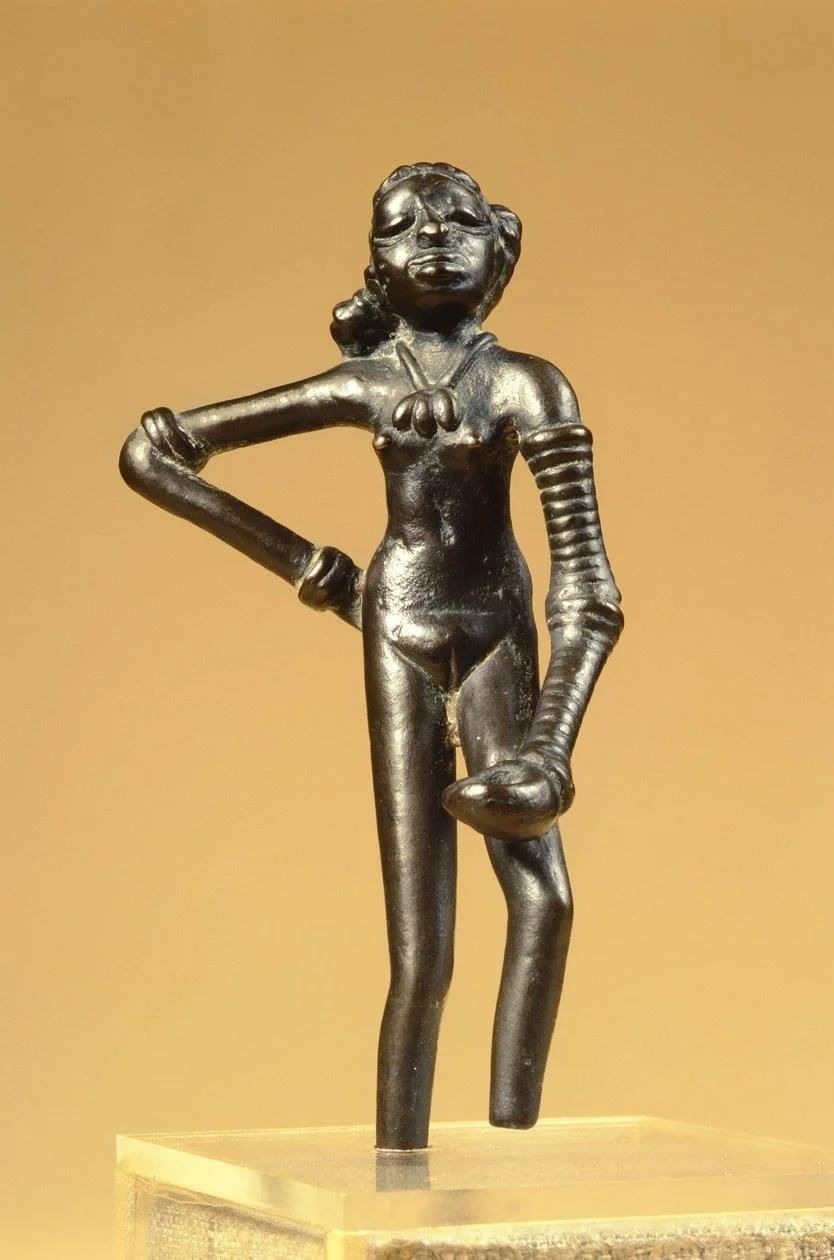UPSC Previous Year Questions (Prelims): Indian Architecture, Sculpture and Pottery | History for UPSC CSE PDF Download
Q.1. The famous female figurine known as 'Dancing Girl', found at Mohenjo-daro, is made of [2025]
(a) Carnelian
(b) Clay
(c) Bronze
(d) Gold
 View Answer
View Answer 
Correct Answer is Option (c)
The 'Dancing Girl' figurine from Mohenjo-daro, a masterpiece of Indus Valley art, is crafted from bronze using the lost-wax casting technique.
Q.2. With reference to forced labor (Vishti) in India during the Gupta period, which one of the following statements is correct? [2019-I]
(a) It was considered a source of income for the State, a sort of tax paid by the people.
(b) It was totally absent in the Madhya Pradesh and Kathiawar regions of the Gupta Empire.
(c) The forced laborer is entitled to weekly wages.
(d) The eldest son of the laborer was sent as the forced laborer.
 View Answer
View Answer 
Correct Answer is Option (a)
A History of Ancient and Early Medieval India by Upinder Singh, page 508: Forced labor (Vishti) became more common than before in this Gupta period. The fact that it is mentioned along with the taxes in the land grant inscriptions suggests that Vishti was considered a source of income for the state, a sort of tax paid by the people. The fact that most of the inscriptions referring to Vishti come from Madhya Pradesh and Kathiyawar regions may suggest this practice for more prevalent in these areas. So, a is right b is wrong.
Q.3. Consider the following: [2019-I]
- Deification of the Buddha
- Treading the path of Bodhisattvas
- Image worship and rituals
Which of the above is/ are the feature/ features of Mahayana Buddhism?
(a) 1 only
(b) 1 and 2 only
(c) 2 and 3 only
(d) 1, 2 and 3
 View Answer
View Answer 
Correct Answer is Option (d)
The Mahayana followers believe in idol or image worship of Buddha. So 1 and 3 are correct. The concept of Bodhisattva is the result of Mahayana Buddhism. So 2 is also correct.
|
210 videos|855 docs|219 tests
|
FAQs on UPSC Previous Year Questions (Prelims): Indian Architecture, Sculpture and Pottery - History for UPSC CSE
| 1. What are the major influences on Indian architecture throughout history? |  |
| 2. What are the distinguishing features of Indo-Islamic architecture? |  |
| 3. How did regional variations impact Indian sculpture? |  |
| 4. What is the significance of pottery in ancient Indian culture? |  |
| 5. What are the key features of Buddhist architecture in India? |  |
















